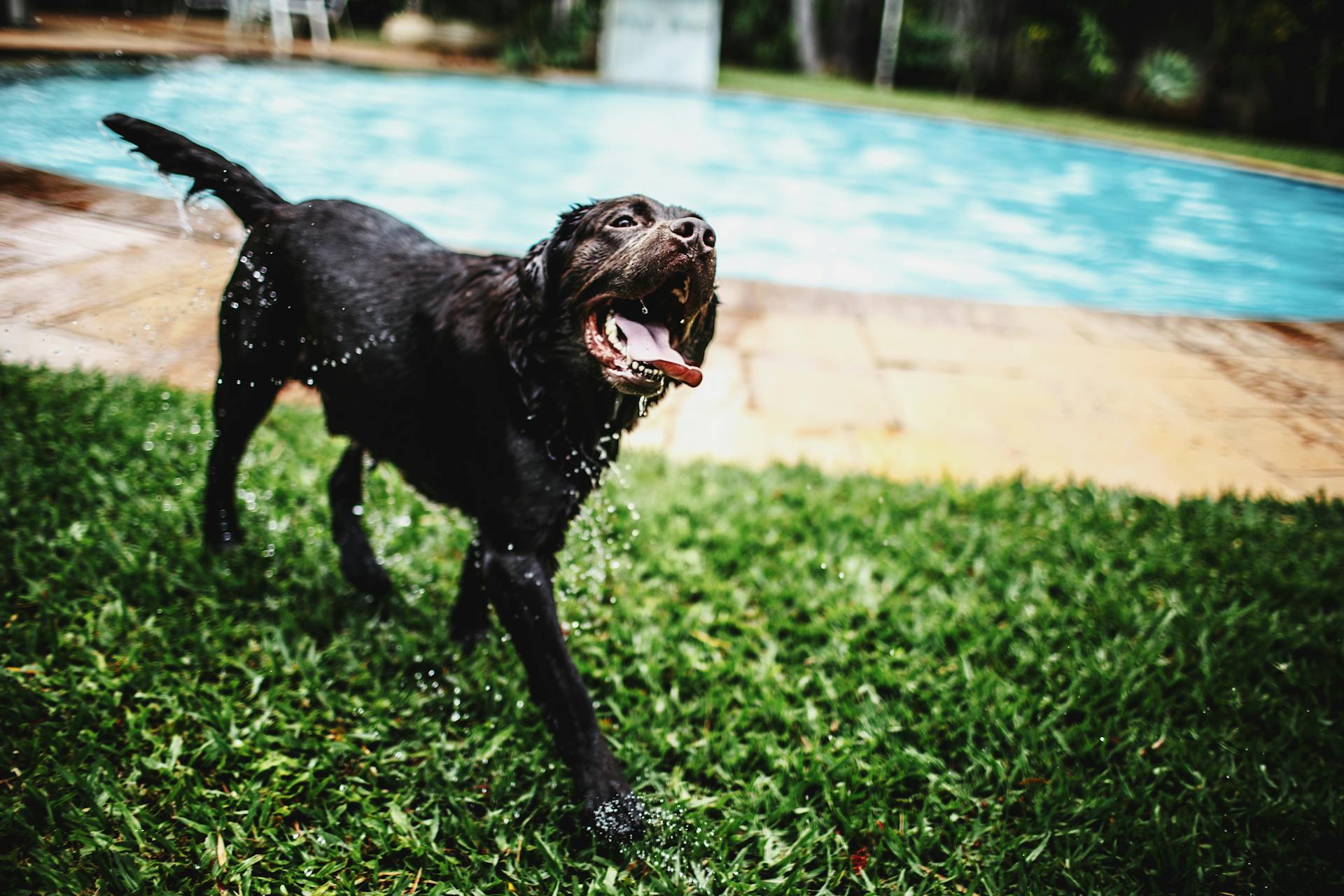Introduction:
Joe was hardly a year old pitbull rescued from a local shelter after getting left behind by his previous owners. When Joe was first brought over, in his first few moments he had displayed signs of aggression, anxiety and severe stubbornness, the shelter did not have any information on the conditions of his previous living situation. However it became apparent that Joe did not receive any decent socialization skills or training of any kind, making him almost feral in terms of nature. Pitbulls as a breed have often been stereotyped to be aggressive and disobedient, often resulting in many owners discarding them. However his new owner Sarah was determined to give Joe a second chance at a better life, she had taken his responsibility and had decided that she would go through the moon and back to make sure that Joe gets the training and skills he deserves to live a comfortable life with her.
The purpose of this case study is to encapsulate how Joe, a Pitbull with a heavily aggressive nature and troubled past was transformed into a highly obedient and well behaved dog. This case study aims to remove the misconceptions about Joe’s breed and its unbecoming nature and show that even pitbulls can very easily become good mannered domesticated pets that can listen to your every command and order.
The challenges faced by the training team and Sarah were countless, Joe’s initial behavior was deemed highly destructive around other dogs, resistant to any sort of commands and hosted severe anxiety around other humans. These issues are usually very common around pitbulls due to their strong willed nature and breed history. Our first major concern was to address these factors and shape our training regimen around it instead of against it.
1. Initial Assessment
During the first few assessments, Joe displayed signs of intense aggression and fear, he would constantly bark at other dogs while walking and would get highly suspicious of any person around him that was not his trainer. He would consistently go against the wishes of his trainer, pull on his leash and show very little interest in commands and orders. In new environments Joe would get extremely anxious and overwhelmed and would go on a downwards spiral of bad behavior and antisocial form. Despite these shortcomings there were a few calm moments where Joe displayed a sense of calmness and trust in his owner, which led us to believe that there still was room for improvement, suggesting that with the right training, Joe could easily become a well-mannered pet.
The specific issues we found during his assessment were aggression toward other dogs, where Joe would consistently lunge at other dogs and their owners despite any provocation whatsoever. He showed a certain amount of stubbornness when asked to sit, speak or come over to his owner. His insistence on doing things his own way made a lot of training sessions very tiring and frustrating. Joe had also inhibited signs of stress and anxiety from his previous life, particularly in new environments or sounds etc.
Sarah was concerned about his aggression and anxiety, she believed that those two issues would be the catalyst to particularly dangerous situations and wanted to do her best to avoid those situations. Sarah wanted Joe to be obedient and disciplined and calm and wanted to build a relationship of trust and mutual respect with her dog.
2. Developing a Training Plan
Pitbulls are known for their strength, loyalty and resilience. However they have also been known to be highly stubborn and strong-willed, which makes training them extremely difficult. Highlighting the importance of consistent training. Understanding that Joe required a firm but gentle approach in training was the major key in making a training plan for him. The plan focused on positive reinforcement while addressing the negative behaviors of his personality.
Positive reinforcement involves rewarding good behaviors with treats and gifts that inhibit a sort of prize to max for doing things his owner’s way. Further creating a feeling of good things happening if he decided to listen to his owner. This way is essential in conveying a message to Joe that listening to his owner will lead to positive outcomes, making him more trusting and happy.
Clicker training is used to reward desired behavior with a specific sound followed by a small reward, this helped Joe quickly associate sound with positive reinforcement.
Desensitization and conditioning helped Joe reduce his anxiety levels and aggression towards other dogs. This works by casually and gradually increasing his exposure to other friendly dogs and people. Combined with rewards for good behavior, it helped Joe become more sensible and calm in social situations.
Establishing a consistent routine was highly important in making Joe realize what was expected of him. Consistent training periods, along with regular commands and rewards, eagerly reinforced good behavior.
3. Implementation of Training
The first few obedience training sessions focused on establishing an everyday routine and introducing Joe to basic orders and commands. Positive reinforcement was essential during these sessions. Joe was initially hesitant in following our orders and training, especially when asked to follow commands or walk without any issue with a leash. However, with constant use of the clicker and rewards, Joe began to show slight signs of positive progress. He started responding to basic commands like the “sit” command and the “stay” command, albeit with a little hesitancy at first, but his leash manners during his walking gradually improved and that was a highly positive sign from his training.
During the training process, several obstacles were encountered. Joe’s stubbornness and anxiety were probably the most crucial challenges that we and Joe’s owner Sarah had to overcome. On a few troublesome days, he would ignore us and Sarah and refuse to follow commands or would quickly become agitated during long walks, making training difficult. Additionally, his anger toward other dogs consistently remained a big issue. To help overcome these problems, the training regimen was improved and adjusted to include more frequent breaks and breathers designed for Joe to rest and become calm, shorter training sessions, and gradual positive reinforcement. Desensitization techniques were also increased, with Joe consistently being gradually introduced to other dogs from a safe distance, we would then slowly decrease the distance as time moved on and as we started to notice his behavior improve.
Over time, Joe’s progress became more clear. He had begun responding obediently to basic commands and showed very minimal resistance during training activities. His leash manners improved by a huge margin, and he had finally started to remain calm around other dogs, even managing to befriend a few of them and engage in playful activities which turned out to be quite a surprise for us. The consistent use of clicker training had proven to be particularly effective, as Joe quickly had realized to associate the clicking sound with positive show of affection. Although his anxiety was still present and became an issue during introducing him to new venues and new people, it became more manageable, and Joe started to display signs of enjoying his training periods.
4. Behavioral Transformation
Joe had achieved several important milestones while undergoing his training. Within a few weeks, he was consistently responding to orders and commands like “sit,” “stay,” and “come.” His manners while on a leash had improved to the point where Sarah could walk with him in public places without any fear of him growling and barking at other dogs. Joe also had begun to show signs of a newly found comfort when introduced to new environments, with his anxiety and stress levels decreasing highly over time.
The training process increasingly reinforced the bonding level between Joe and Sarah. As Joe’s behavior gained a significant improvement, Sarah became more confident and relaxed while handling him, and their relationship grew immensely, based on trust and mutual understanding. Joe’s better behavior not only made him a good dog to be around but also deepened the emotional connection between a pet and its owner. Further enhancing the positive attachment between Sarah and Joe.
5. Long-Term Maintenance
To consistently keep Joe’s obedience in check, Sarah had continued to strengthen the training regime in a constant manner. Short, regular training sessions improved to keep Joe’s skills and senses sharp, and Sarah remained constant in her commands and rewards. Daily socialization with other friendly dogs and consistent introduction and exposure to new places were also part of the ongoing regime to ensure Joe kept stable, comfortable and well-behaved.
Consistency was imperative in preventing a negative dive in Joe’s behavior. Sarah understood the importance in keeping the established regime a routine and continued to use positive reinforcement to establish the importance of good behavior. If Joe had shown signs of regression towards old behaviors, such as elevated anxiety or ignorance to commands, Sarah would revisit the training practices that had proven successful before, ensuring that Joe would keep himself on the right track.
Sarah’s role was highly important in accomplishing Joe’s success in his behavioral changes. Her consistency to implement the training regime, added with her empathy towards Joe’s requirements and needs, played an important role in his transformation. By keeping patient, constant, and positive, Sarah’s relentlessness in following a strict schedule towards Joe’s constant training had been a key factor in ensuring that Joe’s behavioral improvements were long-lasting.
6. Conclusion
Joe’s journey from a scared, angry dog to a well-behaved, obedient pet is a testament to the strength of consistent training and understanding of the species of this type. Through positive reinforcement, resilience, and a tailored training plan, Joe was able to overcome his mental and behavioral challenges and become a confident, well-adjusted dog.
This case study highlights several key takeaways:
Knowing the characteristics and needs of the breed is important in making an effective training plan.
Training a dog with mental and stress issues requires patience and consistency. Progress may be slow, but with persistence, significant improvements can be achieved.
Rewarding good behavior is more effective than punishing bad behavior. Positive reinforcement helps build trust and encourages the dog to repeat desired behaviors.
For other Pitbull owners facing similar challenges, Joe’s story offers hope and encouragement. With the right approach, any dog can overcome their challenges and become a loving, obedient companion. It’s important to remain patient, consistent, and positive throughout the training process, and to never give up on a dog that has the potential to thrive.
Testimonial:
“Joe has come such a long way since we started with him. I’m incredibly proud and glad that he has made progress in his behavior and that he’s changed from the scared little angry dog that he used to be before. The bond we’ve developed will endure for many days to come. It wasn’t always easy, but watching him change into a well-behaved, content dog has been incredibly peaceful and rewarding for me. I couldn’t have done it without the help and guidance provided to me from the training team and the experts that consulted me. Thank you for helping Joe and me become the best of friends and developing us to become a highly efficient team, I’m sure that we will develop into the most effective team we can be!” – Sarah





